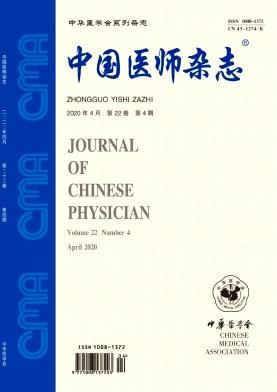Value of ultrasound quantitative scoring and ultrasound elastography in the diagnosis and differential diagnosis of thyroid space occupying lesions
Q4 Medicine
引用次数: 0
Abstract
Objective To explore the value of ultrasound quantitative scoring and ultrasound elastography in the diagnosis and differential diagnosis of thyroid space occupying lesions. Methods 193 patients with nodular thyroid lesions (245 thyroid nodules in total) diagnosed from January 2016 to December 2017 were selected as the study objects. The pathological results were used as the gold standard to draw the receiver operating characteristic (ROC) of the patients with malignant lesions predicted by conventional ultrasound quantitative score and ultrasound elastic imaging grading, and calculate the sensitivity, specificity, positive predictive value and negative predictive value predictive value, accuracy, area under curve (AUC) and 95% CI. Results Of 245 thyroid nodules, 174 were benign and 71 were malignant.The results of conventional ultrasound quantitative score showed that 70 of 193 patients had ultrasound quantitative score ≥4, and 74 of them had ultrasound elastic imaging grade of 4-5. The results of conventional ultrasound quantitative score showed that 70 of 193 patients had ultrasound quantitative score ≥ 4, and 74 of them had ultrasound elastic imaging grade of 4-5. 72 malignant nodules were detected by conventional ultrasound quantitative score, 52 were diagnosed correctly, 19 were missed and 20 were misdiagnosed. 75 malignant nodules were detected by ultrasound elastic imaging, 64 were diagnosed correctly, 7 were missed and 11 were misdiagnosed. The sensitivity and AUC of ultrasound elastic imaging were higher than that of ultrasound quantitative scoring (P<0.05), and the specificity of ultrasound quantitative scoring and elastic imaging positive were higher than that of ultrasound quantitative score combine with ultrasound elastic imaging, with statistically significant difference (P<0.05). The sensitivity of quantitative ultrasound scoring positive or elastography positive was higher than that of quantitative ultrasound scoring, elastography, quantitative and elastography, and the specificity was lower than that of quantitative and elastography, with statistically significant difference (P<0.05). Conclusions The clinical value of ultrasound elastography in the diagnosis of thyroid malignant nodule is better than that of conventional ultrasound quantitative scoring. The combination of the two methods is helpful to the diagnosis and exclusion of thyroid malignant nodule, which can be flexibly used according to the actual situation. Key words: Thyroid nodule; Thyroid neoplasms; Elasticity imaging techniques; Diagnosis, differential超声定量评分与超声弹性成像在甲状腺占位性病变诊断与鉴别诊断中的价值
目的探讨超声定量评分及超声弹性成像在甲状腺占位性病变诊断与鉴别诊断中的价值。方法选取2016年1月至2017年12月诊断为甲状腺结节性病变的193例患者(共245个甲状腺结节)作为研究对象。以病理结果为金标准,绘制常规超声定量评分和超声弹性成像分级预测恶性病变患者的受试者工作特征(ROC),计算其敏感性、特异性、阳性预测值和阴性预测值预测值、准确率、曲线下面积(AUC)和95% CI。结果245例甲状腺结节中,良性174例,恶性71例。常规超声定量评分结果显示,193例患者中有70例超声定量评分≥4分,其中74例超声弹性成像分级为4-5级。常规超声定量评分结果显示,193例患者中有70例超声定量评分≥4分,其中74例超声弹性成像分级为4-5级。常规超声定量评分检出72例恶性结节,正确诊断52例,漏诊19例,误诊20例。超声弹性成像发现恶性结节75例,正确诊断64例,漏诊7例,误诊11例。超声弹性成像的敏感性和AUC均高于超声定量评分(P<0.05),超声定量评分和弹性成像阳性的特异性均高于超声定量评分联合超声弹性成像,差异均有统计学意义(P<0.05)。超声定量评分阳性或弹性成像阳性的敏感性高于超声定量评分、弹性成像、定量和弹性成像,特异性低于定量和弹性成像,差异均有统计学意义(P<0.05)。结论超声弹性成像对甲状腺恶性结节的诊断价值优于常规超声定量评分。两种方法的结合有助于甲状腺恶性结节的诊断和排除,可根据实际情况灵活运用。关键词:甲状腺结节;甲状腺肿瘤;弹性成像技术;诊断,鉴别
本文章由计算机程序翻译,如有差异,请以英文原文为准。
求助全文
约1分钟内获得全文
求助全文

 求助内容:
求助内容: 应助结果提醒方式:
应助结果提醒方式:


